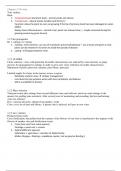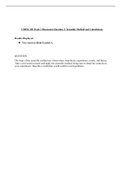Class notes
West level 4 (diploma) D1 study notes
- Course
- Institution
Embark on a comprehensive exploration of wine production with these meticulously crafted study notes designed for WSET Level 4 D1. Perfect for both seasoned enthusiasts and budding professionals, this resource offers a blend of in-depth analysis, easy-to-understand explanations, and graphical illus...
[Show more]




